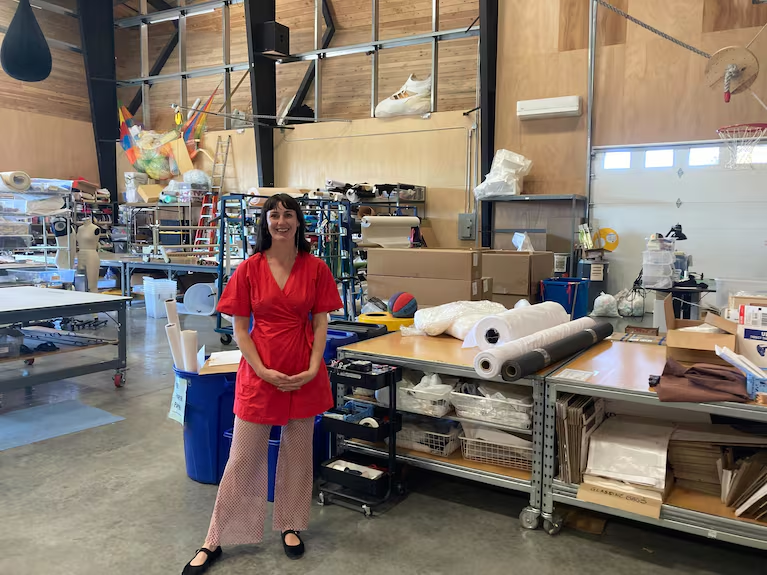PORTLAND, Ore. — Oregon’s manufacturing workforce, already shrinking over the last few years, may face even deeper challenges as federal tariff policies add cost pressures and global trade tensions create uncertainty.
A Sector in Decline
In 2024, about 187,000 Oregonians worked in manufacturing — roughly 9% of the state’s two million-strong workforce. One year later, that number has dropped by 9,400 jobs, or 5%, the steepest decline of any sector in Oregon’s economy.
“That’s the largest decline of any sector in Oregon’s economy over the past year,” said Gail Krumenauer, Oregon’s state employment economist.
Also Read
She noted that just three years ago, in 2022, manufacturing employment was trending toward a peak of 195,000 jobs. Since then, the sector has experienced steady losses.
Overall, Oregon has lost nearly 25,000 jobs across all industries in the past year, bringing the workforce down to about 1.97 million people. The only consistent growth area has been health care and social assistance, now employing about 312,000 workers statewide.
Tariffs: A Double-Edged Sword
In April 2025, the Trump administration expanded tariffs on imported goods, arguing the move would bolster U.S. manufacturing by making foreign products more expensive and driving demand for domestic alternatives.
Supporters say tariffs can protect American jobs. But for many Oregon manufacturers, the new import taxes are instead raising costs and weakening demand.
“Tariffs are raising the cost of doing business,” said one Portland-area producer. “And the uncertainty they create is causing companies to pull back on spending.”
The situation was further complicated in late August when a U.S. appeals court upheld a lower court’s decision deeming most of Trump’s tariffs illegal, though it allowed them to remain in place until October. The case is now likely headed to the Supreme Court, adding more uncertainty for businesses.
One Company’s Struggle
The Portland Garment Factory, which produces clothing and accessories for major clients like Nike, Tillamook, Intel, and OMSI, illustrates how tariffs ripple through multiple stages of production.
Owner Britt Howard explained three key impacts:
-
Rising Material Costs — Even when ordering from U.S. suppliers, many of the fabrics, buckles, elastic, and molded plastics are sourced abroad. Suppliers pass along tariff-related costs, raising input prices.
-
Shrinking Orders — Clients facing higher costs are cutting back on orders, leaving less work for the company. Howard has had to reduce staff hours among her team of fewer than two dozen employees.
-
Reciprocal Tariffs — Clients who export finished products face tariffs abroad, further discouraging them from placing large orders.
“For ongoing contracts, we’re locked into prices,” Howard said. “If the cost to make the item goes up, the money we collect stays the same. It squeezes us in the middle.”
Broader Apparel Industry Challenges
Oregon has long been a hub for apparel and footwear companies, but producing clothing domestically has been difficult since trade policy shifts in the 1990s sent much of the labor-intensive work overseas.
In May, the American Apparel and Footwear Association, along with other trade groups, urged President Trump to reconsider tariffs.
“As much as our members would love to manufacture more footwear and apparel in the U.S., closer to our consumers, it is simply not feasible at scale right now,” the groups wrote. “Tariff policy cannot overcome these obstacles, especially when it is imposing new costs on existing manufacturers.”
Watching the Jobs Data
While tariffs may amplify existing pressures, Krumenauer cautioned that it’s still early to say how much they are driving Oregon’s manufacturing losses.
She pointed to unemployment insurance claims as a potential indicator. So far this year, 400–800 new claims per week have come from laid-off manufacturing workers.
“One of the things I’m watching,” she said, “is whether more first-time unemployment insurance claims start to come from the manufacturing sector.”
If that happens, it could confirm that tariffs — combined with supply chain challenges and global economic shifts — are accelerating job losses in Oregon.
The Road Ahead
For now, Oregon manufacturers remain caught in the middle of a volatile trade environment. Input costs are rising, customers are scaling back, and uncertainty over whether tariffs will remain in place makes it difficult to plan.
What began as a policy intended to protect U.S. manufacturing could instead deepen Oregon’s job losses, especially in industries already under strain.
As Howard of the Portland Garment Factory put it, “This is a ‘squeeze from all sides’ moment. The question is how long small and mid-sized manufacturers can hold on.”












